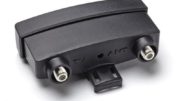I’ve been talking for years about the proposed next-generation TV standard. I think this is a critical year for it, and I’ll even go further and say that unless we really see something interesting happen with ATSC 3.0 (or NextGen TV as they would like you to call it) the whole thing will start to fade away. Maybe that sounds negative, but I actually mean it in a positive way. Let me explain.
The big roadblock is largely gone
It was way back in late 2017 when the FCC first authorized test broadcasts of ATSC 3.0. It took about two years to build out the basic technology and infrastructure, and by the time early 2020 rolled around we all had our focus on something else. That took another two years or so to shake out as you may remember. (Or, if you’ve chosen to forget.)
However, there’s no global reason stopping ATSC 3.0 from going forward. A lot of major markets have started test ATSC 3.0 broadcasts. There are only two smaller roadblocks. One might be getting better, and the other just might not be.
Roadblock #1: Affordable hardware
There still isn’t any affordable hardware that allows a current TV to receive these new broadcasts. Only the top-tier TVs have ATSC 3.0 tuners, so every other TV will need some sort of converter box to receive those new broadcasts. One company has announced a low-priced box for later this year, with much fanfare. I personally hope they deliver. But, it’s going to take more than one company producing one box to meet demand. Plus, I think the box has to be extremely cheap. The last time we did this, the boxes were essentially free as they were subsidized by the federal government. I find that to be unlikely today.
Roadblock #2: The FCC
The original order allowing for test broadcasts was set to expire this year. It was believed that 6 years would be enough time to see if ATSC 3.0 was worth the effort. Let’s say that we’re a lot further behind than anyone thought we would be at this point. The FCC itself has raised some really big questions about whether or not it’s in the public’s best interest to continue testing. For example, whether anyone will be able to afford the technology, and what it really brings to the table. (More on that last point in a minute.)
The FCC has essentially extended the original order by five years. This is good, in that it means ATSC 3.0 isn’t dead in the water. On the other hand, the FCC missed out on its chance to shape the future of the technology. They’re just letting it meander around the same as it has for the last five years.
It’s worth pointing out that the FCC is now in its third year without a full set of commissioners. Congress took so long to try to confirm the administration’s last pick that the person withdrew. So now it has to start all over again. Without a full set of five commissioners, only the simplest and most benign rules have been able to be set. With two Democrats and two Republicans sitting in those chairs, it seems like no one will be able to do anything.
The real question of what you get with ATSC 3.0
The promise of ATSC 3.0, when you look at it from a customer point of view, is just better TV. You’ll get 4K over-the-air, if it’s available. You’ll be able to watch TV in a moving vehicle. Your smart TV can get internet-enabled features along with your TV.
But folks I’ve said it before. The real reason that the TV industry is pushing for ATSC 3.0 is because it allows them to track your viewing habits and serve ads tailored to you. This in itself isn’t a big deal. Live TV streaming services, pay-TV companies, and virtually every web site on the internet do this. I just find it a little suspicious that no one talks about this as an important goal.
I mean, if they said, “we need ATSC 3.0 because without advertising dollars these local stations will go out of business” then I think people would accept that. If they said “without the ability to tailor ads to your home we’re just not competitive,” people would understand. As I said, you get personalized ads on every web site you visit. So it makes me wonder why the broadcasting industry is being so coy about it. Why not just own up to it?
My prediction for 2024
In the end it’s good that the FCC reauthorized testing on ATSC 3.0. However, I don’t think that we’ll see that affordable converter box by the end of the year. (Or, if it launches, it will be super buggy.) All that means is that we won’t be any close to actually adopting this standard, and I think that means we won’t see full adoption until 2029 at the earliest. Given current trends in cord-cutting, it’s really hard to know what the landscape for local broadcasting will be at that point.
I do think that without a better advertising strategy, some of these stations will just fold. Broadcasting is an expensive business. Right now broadcasters get the bulk of their money from retransmission fees. In other words, pay TV companies give them money for carriage. But, if pay TV companies shrink, the amount of money going to local broadcasters shrinks. Again, it’s hard to know what the end result is going to be in six years.
I honestly do hope that something really meaningful happens this year. I just wouldn’t count on it.





